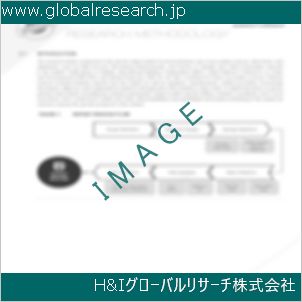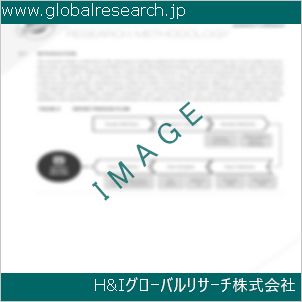Table of Contents
1 Industry Overview of TAIC
1.1 Definition and Specifications of TAIC
1.1.1 Definition of TAIC
1.1.2 Specifications of TAIC
1.2 Classification of TAIC
1.3 Applications of TAIC
1.3.1 Nuclear Application
1.3.2 Non-Nuclear Application
1.4 Industry Chain Structure of TAIC
1.5 Industry Overview and Major Regions Status of TAIC
1.5.1 Industry Overview of TAIC
1.5.2 Global Major Regions Status of TAIC
1.6 Industry Policy Analysis of TAIC
1.7 Industry News Analysis of TAIC
2 Manufacturing Cost Structure Analysis of TAIC
2.1 Raw Material Suppliers and Price Analysis of TAIC
2.2 Equipment Suppliers and Price Analysis of TAIC
2.3 Labor Cost Analysis of TAIC
2.4 Other Costs Analysis of TAIC
2.5 Manufacturing Cost Structure Analysis of TAIC
2.6 Manufacturing Process Analysis of TAIC
3 Technical Data and Manufacturing Plants Analysis of TAIC
3.1 Capacity and Commercial Production Date of Global TAIC Major Manufacturers in 2023
3.2 Manufacturing Plants Distribution of Global TAIC Major Manufacturers in 2023
3.3 R&D Status and Technology Source of Global TAIC Major Manufacturers in 2023
3.4 Raw Materials Sources Analysis of Global TAIC Major Manufacturers in 2023
4 Capacity, Production and Revenue Analysis of TAIC by Regions, Types and Manufacturers
4.1 Global Capacity, Production and Revenue of TAIC by Regions 2019-2024
4.2 Global and Major Regions Capacity, Production, Revenue and Growth Rate of TAIC 2019-2024
4.3 Global Capacity, Production and Revenue of TAIC by Types 2019-2024
4.4 Global Capacity, Production and Revenue of TAIC by Manufacturers 2019-2024
5 Price, Cost, Gross and Gross Margin Analysis of TAIC by Regions, Types and Manufacturers
5.1 Price, Cost, Gross and Gross Margin Analysis of TAIC by Regions 2019-2024
5.2 Price, Cost, Gross and Gross Margin Analysis of TAIC by Types 2019-2024
5.3 Price, Cost, Gross and Gross Margin Analysis of TAIC by Manufacturers 2019-2024
6 Consumption Volume, Consumption Value and Sale Price Analysis of TAIC by Regions, Types and Applications
6.1 Global Consumption Volume and Consumption Value of TAIC by Regions 2019-2024
6.2 Global and Major Regions Consumption Volume, Consumption Value and Growth Rate of TAIC 2019-2024
6.3 Global Consumption Volume and Consumption Value of TAIC by Types 2019-2024
6.4 Global Consumption Volume and Consumption Value of TAIC by Applications 2019-2024
6.5 Sale Price of TAIC by Regions 2019-2024
6.6 Sale Price of TAIC by Types 2019-2024
6.7 Sale Price of TAIC by Applications 2019-2024
6.8 Market Share Analysis of TAIC by Different Sale Price Levels
7 Supply, Import, Export and Consumption Analysis of TAIC
7.1 Supply, Consumption and Gap of TAIC 2019-2024
7.2 Global Capacity, Production, Price, Cost, Revenue, Supply, Import, Export and Consumption of TAIC 2019-2024
7.3 USA Capacity, Production, Price, Cost, Revenue, Supply, Import, Export and Consumption of TAIC 2019-2024
7.4 EU Capacity, Production, Price, Cost, Revenue, Supply, Import, Export and Consumption of TAIC 2019-2024
7.5 China Capacity, Production, Price, Cost, Revenue, Supply, Import, Export and Consumption of TAIC 2019-2024
7.6 Japan Capacity, Production, Price, Cost, Revenue, Supply, Import, Export and Consumption of TAIC 2019-2024
8 Major Manufacturers Analysis of TAIC
8.1 Manufacturer One
8.1.1 Company Profile
8.1.2 Product Picture and Specifications
8.1.2.1 Type I
8.1.2.2 Type II
8.1.2.3 Type III
8.1.3 Capacity, Production, Price, Cost, Gross and Revenue
8.1.4 Contact Information
8.2 Manufacturer Two
8.2.1 Company Profile
8.2.2 Product Picture and Specifications
8.2.2.1 Type I
8.2.2.2 Type II
8.2.2.3 Type III
8.2.3 Capacity, Production, Price, Cost, Gross and Revenue
8.2.4 Contact Information
8.3 Manufacturer Three
8.3.1 Company Profile
8.3.2 Product Picture and Specifications
8.3.2.1 Type I
8.3.2.2 Type II
8.3.2.3 Type III
8.3.3 Capacity, Production, Price, Cost, Gross and Revenue
8.3.4 Contact Information
8.4 Manufacturer Four
8.4.1 Company Profile
8.4.2 Product Picture and Specifications
8.4.2.1 Type I
8.4.2.2 Type II
8.4.2.3 Type III
8.4.3 Capacity, Production, Price, Cost, Gross and Revenue
8.4.4 Contact Information
8.5 Manufacturer Five
8.5.1 Company Profile
8.5.2 Product Picture and Specifications
8.5.2.1 Type I
8.5.2.2 Type II
8.5.2.3 Type III
8.5.3 Capacity, Production, Price, Cost, Gross and Revenue
8.5.4 Contact Information
…
9 Marketing Trader or Distributor Analysis of TAIC
9.1 Marketing Channels Status of TAIC
9.2 Traders or Distributors with Contact Information of TAIC by Regions
9.3 Ex-work Price, Channel Price and End Buyer Price Analysis of TAIC
9.4 Regional Import, Export and Trade Analysis of TAIC
10 Industry Chain Analysis of TAIC
10.1 Upstream Major Raw Materials Suppliers Analysis of TAIC
10.1.1 Major Raw Materials Suppliers with Contact Information Analysis of TAIC
10.1.2 Major Raw Materials Suppliers with Supply Volume Analysis of TAIC by Regions
10.2 Upstream Major Equipment Suppliers Analysis of TAIC
10.2.1 Major Equipment Suppliers with Contact Information Analysis of TAIC
10.2.2 Major Equipment Suppliers with Product Pictures Analysis of TAIC by Regions
10.3 Downstream Major Consumers Analysis of TAIC
10.3.1 Major Consumers with Contact Information Analysis of TAIC
10.3.2 Major Consumers with Consumption Volume Analysis of TAIC by Regions
10.4 Supply Chain Relationship Analysis of TAIC
11 Development Trend of Analysis of TAIC
11.1 Capacity, Production and Revenue Forecast of TAIC by Regions and Types
11.1.1 Global Capacity, Production and Revenue of TAIC by Regions 2024-2029
11.1.2 Global and Major Regions Capacity, Production, Revenue and Growth Rate of TAIC 2024-2029
11.1.3 Global Capacity, Production and Revenue of TAIC by Types 2024-2029
11.2 Consumption Volume and Consumption Value Forecast of TAIC by Regions, Types and Applications
11.2.1 Global Consumption Volume and Consumption Value of TAIC by Regions 2024-2029
11.2.2 Global and Major Regions Consumption Volume, Consumption Value and Growth Rate of TAIC 2024-2029
11.2.3 Global Consumption Volume and Consumption Value of TAIC by Types 2024-2029
11.2.4 Global Consumption Volume and Consumption Value of TAIC by Applications 2024-2029
11.3 Supply, Import, Export and Consumption Forecast of TAIC
11.3.1 Supply, Consumption and Gap of TAIC 2024-2029
11.3.2 Global Capacity, Production, Price, Cost, Revenue, Supply, Import, Export and Consumption of TAIC 2024-2029
11.3.3 USA Capacity, Production, Price, Cost, Revenue, Supply, Import, Export and Consumption of TAIC 2024-2029
11.3.4 EU Capacity, Production, Price, Cost, Revenue, Supply, Import, Export and Consumption of TAIC 2024-2029
11.3.5 China Capacity, Production, Price, Cost, Revenue, Supply, Import, Export and Consumption of TAIC 2024-2029
11.3.6 Japan Capacity, Production, Price, Cost, Revenue, Supply, Import, Export and Consumption of TAIC 2024-2029
12 New Project Investment Feasibility Analysis of TAIC
12.1 New Project SWOT Analysis of TAIC
12.2 New Project Investment Feasibility Analysis of TAIC
13 Conclusion of the Global TAIC (CAS 1025-15-6) Industry 2024 Market Research Report
| ※参考情報 TAIC(TAIC、化学物質情報番号: CAS 1025-15-6)は、化学物質の一種であり、主に工業分野で利用されています。TAICは、トリアクリル酸アミドに関連するモノマーであり、さまざまな化学反応や合成に利用される重要な化合物です。この物質は、特に合成樹脂やコーティング剤の製造において高い価値を持っています。 TAICの化学構造は、通常、トリアクリル基を含む分子から成り立っています。このため、TAICは多官能性モノマーとしての特性を持ち、重合反応において配合や反応性が非常に高いことが特徴です。多官能性モノマーは、化合物が化学的に結合する際に複数の反応サイトを持つため、ネットワーク状のポリマーを形成しやすく、強度や耐久性の向上につながります。 TAICの利用分野は広範で、特にプラスチック、樹脂、コーティング、接着剤、そして繊維の製造においてその需要が高まっています。例えば、知名度の高いエポキシ樹脂やポリウレタン樹脂の硬化剤として使用されることが多く、その結果、優れた物理的特性を持つ材料が得られます。また、TAICは光硬化剤としても利用されており、UV硬化技術による印刷やコーティングの分野で、硬化時間の短縮や作業効率の向上に寄与します。 TAICの特徴の一つに、熱安定性があります。高温環境下でもその化学的性質を維持するため、さまざまな工程での使用が可能です。そのため、TAICは自動車産業や電子機器の製造においても重宝されています。また、TAICは優れた耐薬品性を持ち、有機溶剤や酸、アルカリに対しても耐久性があります。このため、厳しい環境下での運用が求められるアプリケーションにおいても、安全に使用できるのが魅力です。 TAICの製造方法は多岐にわたり、一般的にはアクリル酸とアミンを反応させることで合成されます。この反応により得られるTAICは、高い反応性を持ち、さまざまな材料とのブレンドが容易です。さらに、TAICは他のモノマーと共重合させることで、特性を調整することが可能です。この柔軟性が、TAICを使った材料開発の大きな利点となっています。 近年、TAICを使用した新しい材料の開発が進められています。特に、環境に優しい材料や持続可能な技術が注目される中で、TAICを利用したバイオベースのポリマーや、リサイクル可能な樹脂の研究が活発化しています。そのため、TAICは持続可能な化学産業にも貢献する可能性を秘めていると言えます。 使用時の注意点としては、TAICは揮発性があり、吸入や皮膚接触による健康影響が懸念されますので、取り扱う際には適切な安全対策が求められます。また、火気や高温に対して敏感であるため、保存や使用には十分な注意が必要です。このような安全管理が、TAICを取り扱う際には必須となります。 TAICの市場においては、近年の需要増加に伴い、サプライチェーンの確保や品質管理が重要視されています。さまざまな産業における粉末状、液状、エマルジョン形態のTAICが流通しており、それぞれの用途に応じた最適な形態での供給が欠かせません。また、総合的な性能を評価するために、TAICを含む製品の試験や評価も充実してきています。これにより、製造業者は競争力を高めるための技術革新を推進できるようになります。 TAICは、化学物質としての特性だけでなく、その多様な応用可能性からも魅力的な素材です。今後も新たな用途が開発され、より多くの分野での活躍が期待されます。化学産業や関連技術が進化する中にあって、TAICはその中心的な役割を果たし続けるでしょう。このことから、TAICは化学物質の中でも特に重要な存在であり、今後のさらなる研究開発とともに、注目を集め続けると考えられます。 |
❖ 免責事項 ❖
http://www.globalresearch.jp/disclaimer












